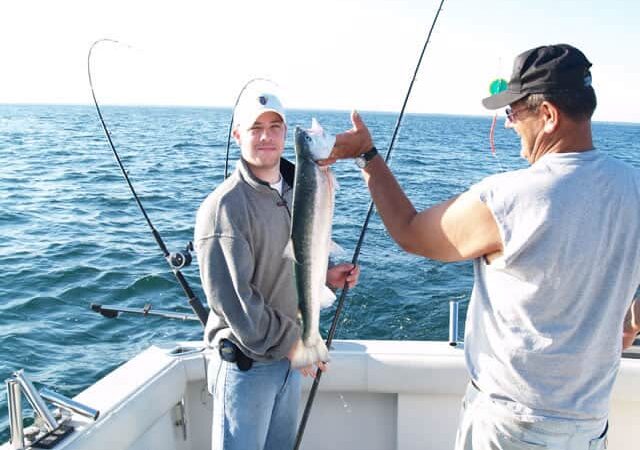Yemen, often celebrated for its rich cultural heritage and stunning landscapes, is a destination that might not immediately come to mind when one thinks of salmon fishing. Located on the southeastern tip of the Arabian Peninsula, Yemen offers a diverse range of fishing opportunities. While the country is not traditionally known for salmon, exploring its unique fishing ecosystems provides an intriguing perspective on how global fishing practices can intersect with local environments.
The Geography of Yemen and Its Fishing Ecosystems
Yemen’s diverse geography includes mountains, plateaus, deserts, and a coastline along the Red Sea and the Arabian Sea. This geographical diversity contributes to a variety of fishing ecosystems. The country’s northern coastline along the Red Sea is known for its coral reefs and marine biodiversity, while the southern Arabian Sea coast features a more temperate marine environment. These environments create different fishing habitats, although salmon are typically found in colder waters.
The coastal waters of Yemen, particularly along the Red Sea, are home to various fish species, including grouper, snapper, and tuna. These fish thrive in the warm waters and coral reef environments. The Arabian Sea’s more temperate waters also support a range of species adapted to slightly cooler conditions, but salmon, known for their preference for cold, freshwaters, are generally not native to these regions.
Salmon Fishing: A Rare Gem in Yemen
While salmon are not indigenous to Yemen, the allure of salmon fishing can be explored through unique opportunities such as aquaculture and artificial habitats. In recent years, global interest in sustainable fishing and aquaculture has led to innovative projects aimed at introducing salmon farming to warmer climates. Yemen’s fishing industry is beginning to explore these options as a way to diversify and expand its offerings.
Aquaculture facilities in Yemen could potentially replicate the cold-water environments that salmon require. These facilities often use advanced technologies to regulate water temperature and ensure optimal conditions for salmon growth. Such initiatives not only provide local fishermen with new opportunities but also contribute to the global supply of salmon.
The Challenges of Introducing Salmon Fishing
Introducing salmon fishing into Yemen’s ecosystems presents several challenges. Firstly, salmon are known for their complex life cycles, which include migration from freshwater rivers to the ocean and back again. This migratory behavior is adapted to specific environmental conditions, which are markedly different from Yemen’s typically warmer waters.
Moreover, the local marine environment and freshwater resources in Yemen might not naturally support salmon populations. Ensuring that these conditions are adequately replicated requires significant investment in technology and infrastructure. Additionally, there is the potential impact on local ecosystems and fish species that could be affected by the introduction of a non-native species.
The Benefits of Diversifying Yemen’s Fishing Industry
Despite these challenges, diversifying Yemen’s fishing industry with salmon aquaculture presents several benefits. For one, it provides new economic opportunities and employment in a region that has traditionally relied on a more limited range of fishing practices. Salmon farming can create jobs in hatcheries, farms, and associated industries, contributing to economic development.
Additionally, introducing salmon farming can enhance Yemen’s reputation as a diverse fishing destination. It could attract tourists and fishing enthusiasts interested in experiencing new and unique fishing opportunities. This could further support the local economy and promote the development of sustainable tourism practices.

Sustainable Practices and Conservation
As Yemen explores the potential for salmon fishing, it is crucial to focus on sustainable practices. Sustainable aquaculture involves responsible management of resources, minimizing environmental impacts, and ensuring the welfare of the fish. This includes managing water quality, preventing disease, and avoiding the use of harmful chemicals.
Conservation efforts are also important to ensure that any new fishing practices do not negatively impact Yemen’s native marine and freshwater ecosystems. Collaboration with environmental organizations and adherence to international best practices can help mitigate these risks.
The Future of Salmon Fishing in Yemen
The future of salmon fishing in Yemen is still in the early stages of development. While the country’s warm waters present challenges for traditional salmon fishing, innovative aquaculture techniques and sustainable practices offer promising opportunities. As technology advances and interest in diverse fishing experiences grows, Yemen could become a unique player in the global fishing landscape.
For enthusiasts and adventurers looking to explore Yemen’s fishing opportunities, it is essential to stay informed about local regulations and conservation efforts. Engaging with local communities and supporting sustainable practices will contribute to the responsible development of this emerging industry.
Conclusion
Yemen’s unique fishing ecosystems offer an intriguing backdrop for exploring the possibilities of salmon fishing in the Arabian Peninsula. While the country’s warm waters present challenges for traditional salmon fishing, innovative aquaculture and sustainable practices are paving the way for new opportunities. As Yemen continues to develop its fishing industry, it has the potential to become a unique destination for those interested in experiencing a blend of traditional and modern fishing practices. Exploring Yemen’s fishing ecosystems not only highlights the country’s diverse marine environments but also underscores the potential for global fishing practices to intersect with local innovations.

